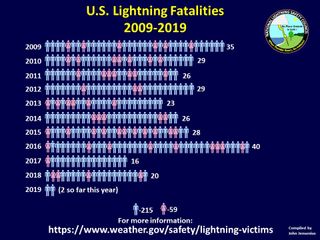Lightning Strikes and Kills Motorcyclist. Why Rubber Tires Didn't Protect Him.

Tragedy struck when a motorcyclist driving in Florida during a thunderstorm was struck by lightning, causing him to crash and die on Sunday (June 9), according to news sources.
The man's death, the second U.S. fatality from lightning this year, may make some people wonder why the motorcycle's rubber tires didn't protect the 45-year-old from the lightning bolt. But this belief is an urban legend, said John Jensenius, a lightning safety specialist with the National Lightning Safety Council.
"It's a myth that rubber tires protect a vehicle from being struck by lightning," Jensenius told Live Science in an email. [Elves, Sprites & Blue Jets: Earth's Weirdest Lightning]
Vehicles are struck by lightning fairly regularly. But if you find yourself stuck on the road during a lightning storm, it's best to be in a hard-topped metal vehicle, Jensenius said. That's because the metal exterior acts like a Faraday cage. The cage — named for the 19th-century scientist British Michael Faraday, who studied electromagnetism and electrochemistry — keeps any electrical charge that hits it in its outer metal shell, away from the interior (in this case, any passengers within a vehicle).

"If struck, the electrical charge will pass around the metal shell of a hard-topped vehicle and into the ground, often passing through or over the tires," Jensenius said. "If people can't get inside a substantial building, we recommend that they get inside a hard-topped metal vehicle with the windows rolled up."
In the man's case, he was driving southbound on Interstate 95 in Volusia County, Florida, according to Click Orlando. Lightning struck the man's helmet, officials said, based on a blast mark on the helmet's plastic shell.
Jensenius was quick to debunk another myth about lightning — the idea that it can't strike you if you're traveling fast enough. But lightning travels far too quickly to be outrun by humans, he said.
Sign up for the Live Science daily newsletter now
Get the world’s most fascinating discoveries delivered straight to your inbox.
"The time it takes to go from the cloud base to the ground is only a small fraction of a second," Jensenius said. "During this time, anything traveling at highway speeds is virtually standing still with respect to the lightning."
Since 2006, there have been 10 lightning fatalities related to motorcycles in the United States, "although, in several cases, the rider was not on the bike when struck," Jensenius said.
- Images: Red Sprite Lightning Revealed in Stunning Photos
- Electric Earth: Stunning Images of Lightning
- What Are Your Odds of Dying From …?
Originally published on Live Science.

Laura is the archaeology and Life's Little Mysteries editor at Live Science. She also reports on general science, including paleontology. Her work has appeared in The New York Times, Scholastic, Popular Science and Spectrum, a site on autism research. She has won multiple awards from the Society of Professional Journalists and the Washington Newspaper Publishers Association for her reporting at a weekly newspaper near Seattle. Laura holds a bachelor's degree in English literature and psychology from Washington University in St. Louis and a master's degree in science writing from NYU.
